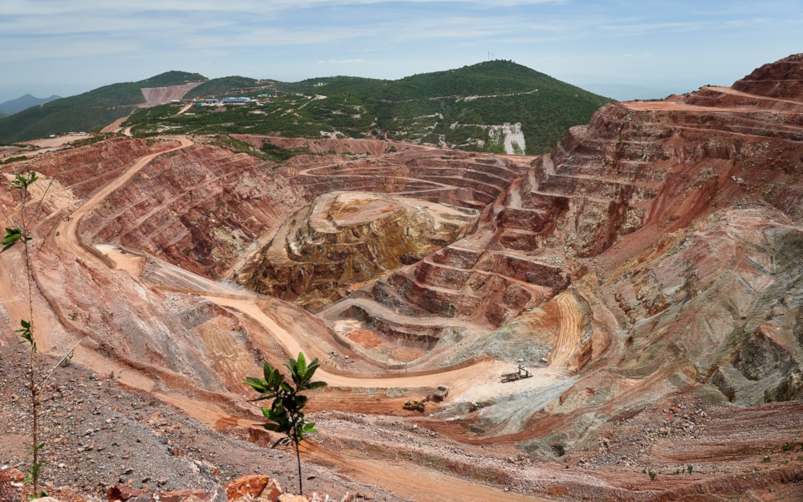Copper cathodes from Glencore's Mutanda mine in the Democratic Republic of the Congo are shown here. Copper was one of many commodities to see its price drop in 2018. Courtesy of Glencore
Across the board minerals and metals defied analysts’ rosy predictions for 2018, as trade tensions and slowed economic growth wreaked havoc on global markets. While most commodity prices dropped, with only a few exceptions, experts say that there isn’t cause to be too worried.
Base metals were riding high at the beginning of the year, with copper trading above the US$3 per pound mark and continuing to climb. Nickel and zinc boasted similar performances, steadily rising throughout the year to hit peaks of US$7.14 per pound in June and US$1.64 per pound in February respectively, according to Infomine.
“[In] the first half of 2018 metals were actually performing quite well,” said TD Securities commodity strategist Ryan McKay. “Demand was churning along well. Investors were worried about underinvestment in future production that would see these markets fall into deficits.”
United States President Donald Trump’s aggressive trade war with China, in June, halted that progress. Trump imposed 25 per cent tariffs on hundreds of Chinese goods, including metals such as copper, iron and nickel, prompting the Chinese government to respond with tariffs of its own. With China being one of the largest metals-purchasing nations, investors anticipated China slowing down buying and selling these metals. As such, prices of these commodities on the market began to drop.
“A lot of these metals still performed okay, but you had a lot of the investment community, the speculators, hedge funds, etc., starting to short these metals and push [them] down,” McKay said.
Zinc, which in 2017 saw its price rise enough that speculators believed some companies may re-open shuttered operations to take advantage of the boom, was hit the worst, plummeting 36 per cent from its 2018 high to a price of US$1.04 per pound in September. The speculation of higher inventory levels, as well as the cooling effect of the U.S.-China trade war, caused worry that the market might be flooded with zinc, which caused the price to fall heavily, according to McKay.
The price of nickel fell 32 per cent during the second half of the year, to US$4.83 per pound at its lowest, partially buoyed by ongoing fervour over the electric vehicle battery market. Copper’s roughly 21 per cent drop from its peak to a low price of US$2.57 per pound was well-reported.
Related: Battery applications and changes in Chinese construction standards are increasing demand for vanadium
Bulk commodities such as iron ore and metallurgical coal did not suffer as steep a decline as base metals, but still faced headwinds in 2018. Iron ore fell slightly, as China introduced new environmental policies targeting steel mills, including a levy on every tonne of waste produced by the mill. Different grades of iron ore have been pricing on different levels as well, with interest in cleaner, higher-grade iron rising.
Metallurgical coal ended the year in the black, according to Scotiabank, due to supply issues caused by a derailed train carrying coal from Yancoal’s Moolarben mine in Australia. But Scotiabank commodity economist Rory Johnston wrote in the bank’s Global Outlook report for 2019 that the rise is not sustainable and will likely fall in 2019 and 2020 once the supply issues are resolved.
Towards the end of 2018 it was thought that the world economy might be facing a global recession in the new year, due to slowing economies in the U.S. and potential interest rate increases from the U.S. Federal Reserve and unstable political situations such as the United Kingdom’s upcoming Brexit. This drove down prices even further, McKay said.
While these metal commodity losses may seem dramatic, they were not entirely unexpected. According to Johnston, price drops were bound to happen in some form after commodities had risen to such heights in 2017 and early to mid-2018.
“What’s happening is global growth is indeed slowing, but it’s important to stress that just because the economy is slowing doesn’t mean that the economy is slow,” Johnston said. “We were just going too far too fast.”
The highs earlier in the year were never truly justified, Johnston said, and the lows that we’re currently experiencing are just the flip-side.
“What we did was really overshot [the price] and kind of undershot it back on the downside,” Johnston said. “So we think that’s going to kind of unwind itself as we go forward and that is what’s going to help lift copper, as well as a bunch of the other commodity prices, from the lows we currently see them at to our range in 2019 and forward.”
According to Johnston and McKay, investors should look forward to gains in commodity prices over the coming year. Johnston said he believes that copper will rebound to around US$3 per pound, zinc to around US$1.20 and nickel to around US$5.50 for 2019. For McKay, a possibility of a U.S.-China trade deal in March and a dovish U.S. Federal Reserve are reason enough to feel optimistic about commodities in 2019.



